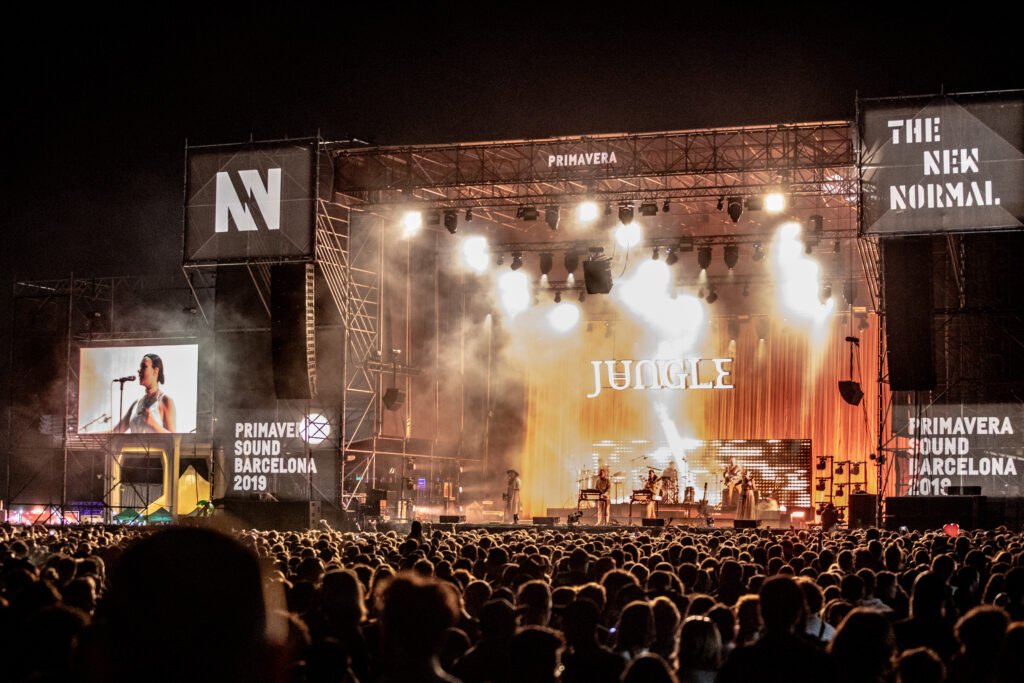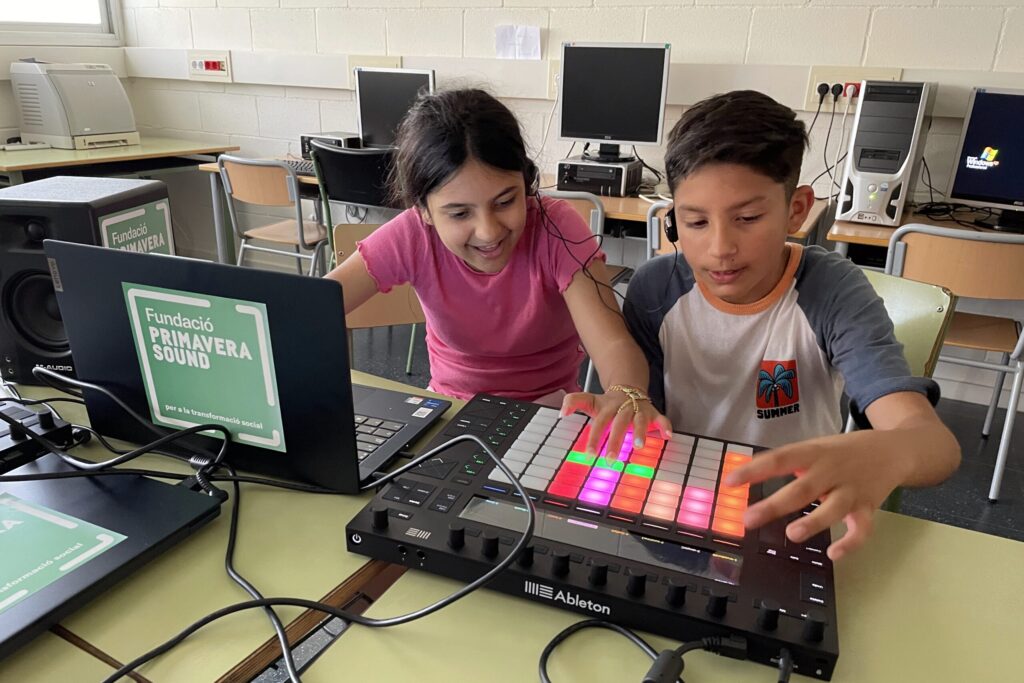Strategic Planning Manual
Index
- Introduction to Strategic Planning
1.1. Definition and Objectives
1.2. Importance of Strategic Planning
1.3. Context in the Fundació Primavera Sound
1.4. Purpose and Benefits - Phases of Strategic Planning
2.1. Initial Phase: Preparation and Diagnosis
2.2. Phase of Strategic Analysis
2.3. Strategy Formulation Phase
2.4. Execution and Monitoring Phase
2.5. Evaluation and Control Phase - Analysis of the Environment and SWOT
3.1. Internal Analysis
3.2. External Analysis
3.3. Application of SWOT Analysis in FPS
3.4. Strategies Derived from SWOT - Strategic Budget Preparation and Implementation
4.1. Setting Financial Priorities
4.2. Resource Allocation per Project
4.3. Expenditure Monitoring
4.4. Control of Budget Modifications - Definition of Strategic Objectives
5.1. General and Specific Objectives
5.2. SMART Methodology
5.3. Setting Success Indicators - Strategy Formulation and Selection
6.1. Short-, Medium- and Long-term Strategies
6.2. Strategic Selection Tools
6.3. Alignment of Strategies with the Mission of the Fundació - Action and Implementation Plan
7.1. Definition of Tasks and Timeline
7.2. Allocation of Responsibilities
7.3. Resource and Budget Allocation - Strategic Control and Monitoring
8.1. Establishing Monitoring Procedures
8.2. Monitoring Progress in Real-Time
8.3. Use of Performance Indicators (KPIs) - Evaluation and Strategic Adjustments
9.1. Results and Performance Evaluation
9.2. Adjustment of Strategies and Plans
9.3. Feedback and Continuous Learning - Conclusion and Final Recommendations
10.1. Thoughts on the Strategic Process
10.2. Lessons Learned and Best Practices
10.3. Projections for the Future of the Fundació Primavera Sound
Introduction to Strategic Planning
1.1. Definition and Objectives
Strategic planning is an integral process that allows the Fundació Primavera Sound (FPS) to establish the key directions for the development of its projects and activities. This process is based on long-term reflection, analysis of the environment and the efficient allocation of resources to fulfil the mission and vision of the Fundació.
1.2. Importance of Strategic Planning
Strategic planning ensures that the Fundació is aligned with its long-term objectives. It facilitates decision-making, improves organisational efficiency, optimises the use of resources and ensures that the activities undertaken have a significant impact on culture, society and the global environment.
1.3. Context in the Fundació Primavera Sound
The FPS is dedicated to cultural cooperation and sustainability. In a changing world, having a solid strategic plan allows the Fundació to adapt quickly to the transformations of the cultural sector and remain relevant in a global environment of competitive growth.
Purpose and Benefits
The purpose of strategic planning is to ensure alignment of all initiatives with the Fundació’s values and objectives. Key benefits include improved decision making, optimisation of available resources and the ability to adapt to new opportunities.
2. Phases of Strategic Planning
2.1. Initial Phase: Preparation and Diagnosis
During this phase, an exhaustive analysis of the internal and external context of the Fundació is carried out. This diagnosis makes it possible to identify the strengths, weaknesses, opportunities and threats (using SWOT analysis) that will influence strategic decisions.
2.2. Strategic Analysis Phase
An analysis of the environment is carried out using tools such as the PESTEL analysis, which assesses the political, economic, social, technological, ecological and legal factors that could affect the Fundació. This phase also includes an internal review of the Fundació ‘s resources, capacities and limitations.
2.3. Strategy Formulation Phase
At this stage, the strategies to be followed in order to achieve the set objectives are defined. Strategies must be clear, specific and measurable. This phase includes the formulation of short-, medium- and long-term plans, aligned with the values and mission of the Fundació.
2.4. Implementation and Monitoring Phase
Once the strategies have been formulated, it is crucial to carry out the actual implementation of the plan. This phase includes allocating resources, organising tasks and scheduling activities. In addition, it is necessary to establish a follow-up system to monitor the progress of implementation.
2.5. Evaluation and Monitoring Phase
Evaluation makes it possible to verify that the strategies and activities are achieving the expected results. Key performance indicators (KPIs) will be key to measuring the success of each initiative. If necessary, adjustments to strategies will be made to improve results and address any deviations.
3. Analysis of the Environment and SWOT
3.1. Internal Analysis
The internal analysis assesses organisational capacities, human resources, financial capital, key relationships with partners and financial backers, and the organisational structure. This analysis identifies the Fundació’s strengths, such as its reputation and its network of contacts in the cultural sector.
3.2. External Analysis
An analysis of the social, economic and cultural environment in which the Fundació operates is carried out. This analysis includes the study of trends in global culture, the international cooperation and the socio-economic challenges that affect the Fundació and its projects.
3.3. Application of the SWOT Analysis in FPS
The SWOT analysis helps to identify:
- Strengths: Network of international partners, experience in organising events, financial strength.
- Weaknesses: Dependence on external funding, limitations in operational capacity.
- Opportunities: Expansion of international networks, growth in demand for sustainable events.
- Threats: Cuts in public budgets, competition in the cultural sector.
3.4. Strategies Derived from SWOT
Strategies should build on strengths, minimise weaknesses, exploit opportunities and guard against threats. This can be achieved by expanding the network of partners, improving sustainability in projects and increasing the visibility of the Fundació in international markets.
4. Strategic Budget Development and Execution
4.1. Establishing Financial Priorities
The Fundació must prioritise initiatives that have the greatest cultural and social impact, allocating resources strategically to maximise the results of investments.
4.2. Distribution of Resources by Project
The budget should be divided into clear categories, such as:
- Operational costs: Including staff costs, supplies, infrastructure.
- Indirect costs: General, administrative and management costs.
- Contingencies: Funds for contingencies or changes in the scope of projects.
4.3. Monitoring Expenditure
It is essential that expenditure be regularly reviewed to ensure that it remains within budget and that funds are being used efficiently.
4.4. Control of Budget Modifications
When modifications to the budget arise due to unexpected changes in project needs, they must be assessed and approved to ensure consistency with the strategic objectives.
5. Definition of Strategic Objectives
5.1. General and Specific Objectives
Objectives should be broken down so that each is achievable and measurable. General objectives should align with the vision of the Fundació, while specific objectives are more detailed and focus on tangible results.
5.2. SMART methodology
The SMART methodology is crucial to ensure that the objectives are:
- S (Specific)
- M (Measurable)
- A (Achievable)
- R (Relevant)
- T (Time-bound)
5.3. Establishing Success Indicators
Each objective should have clear indicators to measure its success, such as the number of participants at an event or the amount of money raised for a cultural project.
6. Strategy Formulation and Selection
6.1. Short-, Medium- and Long-Term Strategies
Strategies should be organised in three-time horizons:
- Short Term: Immediate strategies that impact the day-to-day.
- Medium Term: Strategies that drive projects through their life cycle.
- Long Term: Strategies that define the future of the Fundació and its sustainability.
6.2. Strategic Selection Tools
Use tools such as the BCG matrix, Ansoff matrix and Scenario Analysis to help select the most appropriate strategies according to the needs of the project and the environment.
6.3. Alignment of Strategies with the Fundació’s Mission
It is vital that all strategies are aligned with the core values and objectives of the Fundació to ensure that each action supports the overall mission.
7. Action and Implementation Plan
7.1. Definition of Tasks and Timeline
The action plan should break down each activity into specific tasks, assigning deadlines and responsibilities. A detailed timeline will ensure that deadlines are met.
7.2. Assignment of Responsibilities
Responsibilities should be clearly assigned to team members to ensure that everyone knows their roles and tasks within the project.
7.3. Resource Allocation and Budgeting
Each task must be allocated the necessary resources, both human and financial, for its proper execution.
8. Strategic Control and Monitoring
8.1. Establishing Monitoring Procedures
The progress of the strategic plan should be monitored on an ongoing basis through regular meetings, indicator reviews and analysis of results.
8.2. Real-Time Progress Monitoring
Use project tracking technologies, such as digital platforms and real-time KPIs, for constant monitoring.
8.3. Use of Performance Indicators (KPIs)
KPIs should be defined for each strategic objective, allowing an accurate and continuous measurement of the progress of the project.
9. Evaluation and Strategic Adjustments
9.1. Result and Performance Assessment
At the end of each phase, an evaluation should be carried out to measure the results achieved against the objectives set.
9.2. Adjustment of Strategies and Plans
If necessary, strategic adjustments should be made based on the results of the evaluation.
9.3. Feedback and Continuous Learning
Evaluation processes should include lessons learned that contribute to the continuous improvement of strategic planning.
10. Conclusion and Final Recommendations
10.1. Thoughts on the Strategic Process
This strategic planning process is fundamental to ensure that the monitored on an ongoing basis maintains its relevance and effectiveness in the cultural and social sector.
10.2. Lessons Learned and Best Practices
The strategic process must be dynamic, adapting to the changing environment and improving over time.
10.3. Projections for the Future of the Fundació Primavera Sound
As we move forward in the execution of our projects, we must be prepared to adjust our strategies according to emerging trends and the needs of the global cultural environment.
Document approved with the Board of Trustees meeting of __/__/2025



